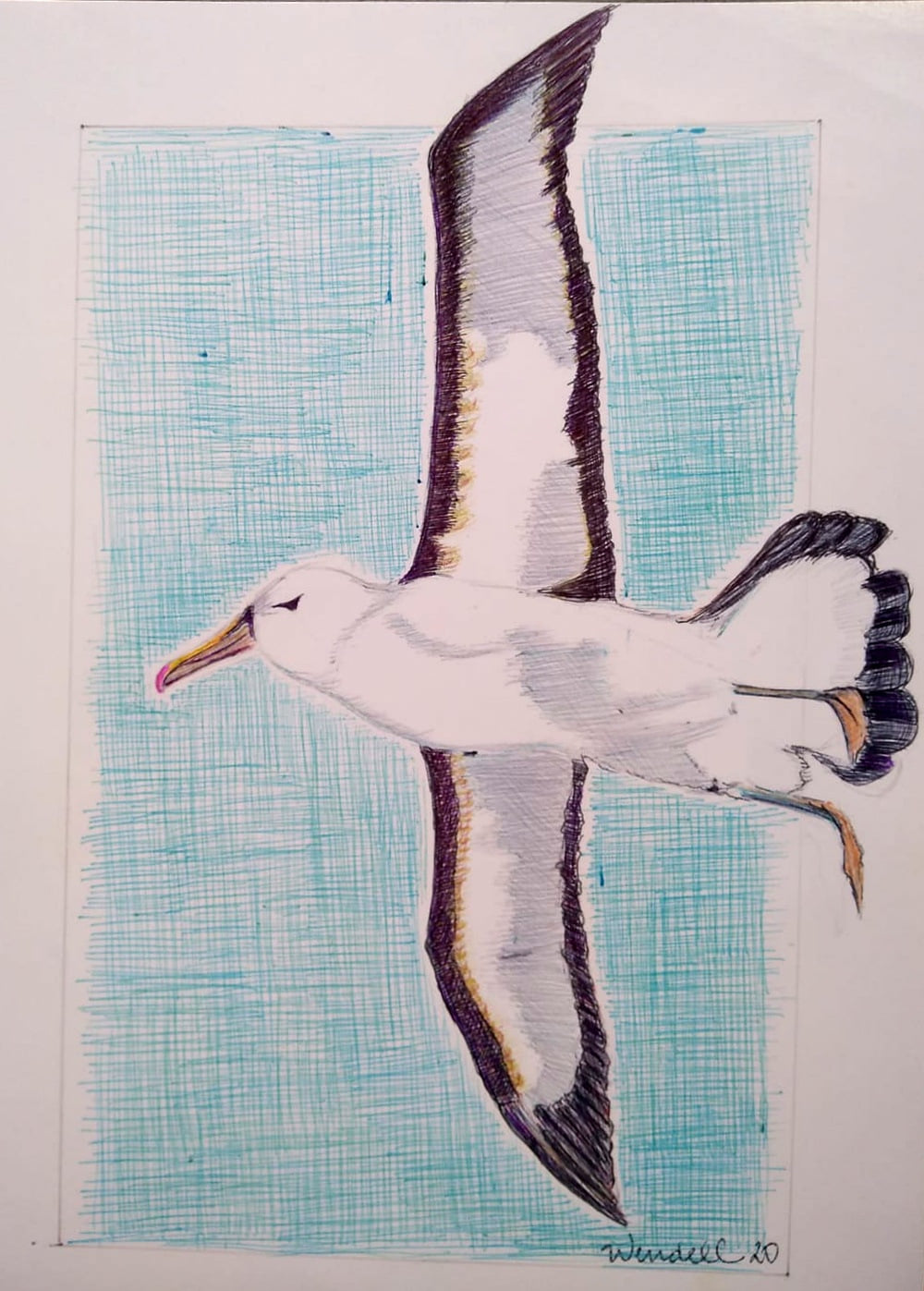
Shy Albatross in flight, by Wendell Ribeiro, Artists and Biologists Unite for Nature, 2020
Peter Ryan & Oluwadunsin Adekola (FitzPatrick Institute, University of Cape Town, Douth Africa) have published in Ostrich Journal of African Ornithology on moult of White-capped/Shy Albatrosses Thalassarche steadi/cauta killed in South African waters.
The paper’s abstract follows:
“Albatrosses typically only replace a subset of flight feathers each annual moult cycle. We scored the moult of 662 White-capped/Shy Albatrosses Thalassarche steadi/cauta, using birds that had been killed by longline fisheries off South Africa. Most adults and immatures alternated replacing the outer primaries (phase 1) and inner primaries (phase 2), but there was considerable variation among adults, with 0–10 primaries replaced each moult cycle. Birds in phase 1 moult replaced fewer primaries than birds in phase 2, but the proportion by mass was similar. Adults replaced more primaries than immatures as there was a disproportionate number of adults in phase 2 moult (82%), which might indicate that most adults off South Africa are in their first year after a successful breeding attempt, but a similar bias occurred among beached birds from New Zealand and Australia. The outer primaries were usually replaced outwards from P8, but the replacement sequence was more variable among the inner primaries. Secondary moult overlapped with primary moult, but not all secondaries were moulted each year. Adults had more active moult centres and replaced more secondaries at once than immatures. Tail moult started after primary moult, with 1–11 feathers growing from 1–6 active centres. Some birds replaced their rectrices in pairs, with often 2 or 3 pairs moulting at once, but others replaced alternate feathers or almost all rectrices at once. A few birds exhibited intense wing moult, but the norm was to replace only 1 or 2 primaries and 1–6 secondaries at once. Age- and sex-related differences in moult intensity presumably result from different time constraints. Adult White-capped/Shy Albatrosses take a year off between successful breeding attempts, allowing time for a more protracted moult. However, we cannot explain the intense moult in some immatures. Our findings support recent studies showing that albatross flight feather moult patterns are more varied than previously reported.”
Reference:
Ryan, P.G. & Adekola, O.E 2023. Pattern and intensity of moult in White-capped/Shy Albatrosses Thalassarche steadi/cauta. Ostrich: 10.2989/00306525.2023.2263169.
John Cooper, Emeritus Information Officer, Agreement on the Conservation of Albatrosses and Petrels, 09 November 2023

 English
English  Français
Français  Español
Español